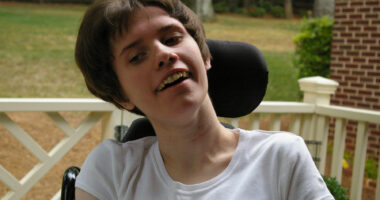Foundation Helps Sponsor Drafting of Guidelines for Juvenile Batten

The Beyond Batten Disease Foundation (BBDF) is sponsoring Care Beyond Diagnosis in its efforts to draft international guidelines to help clinicians counsel and treat patients with CLN3 disease, or juvenile Batten disease.
Based on clinical evidence and consensus-based recommendations, the guidelines are designed to improve patient care and disease management, as well as facilitate reimbursements.
“Having the support of BBDF is a huge achievement for our team,” Jeffrey Donohue, co-CEO of Care Beyond Diagnosis, said in a press release. “Obviously, the financial commitment is important for us to keep the program going, but looking ahead towards the publication of the guidelines, BBDF will be instrumental in dissemination of the guidelines into family/caregivers’ hands. Engagement from the patient community is a necessity in guideline development.”
Given that there are currently more than 7,000 disorders deemed rare diseases, with the vast majority lacking approved therapies, the clinical management of these patients is a challenge and evidence-based guidelines are much needed.
Last April, Care Beyond Diagnosis released the first clinical guidelines for CLN2, also known as late infantile Batten disease, which were published in the Orphanet Journal of Rare Diseases.
The guidelines were reviewed by an independent panel and follow the Appraisal of Guidelines for Research and Evaluation’s AGREE II Tool, a 23-point international tool that assesses the methodological rigor and transparency by which a guideline is developed. Each item is rated with a score from one to seven, where one means strongly disagree and seven indicates strongly agree.
According to the tool, a score of one “should be given when there is no information that is relevant to the AGREE II item or if the concept is very poorly reported.” A score of seven is given when the evidence is exceptional and complies with the full criteria and considerations articulated in its user manual.
The clinical guidelines for CLN2 received a score of 5.7 out of 7 in the AGREE II Tool, which represents the highest assessment for a rare disease guideline publication, according to Donohue.
The draft for the guidelines for CLN3 disease began in October 2020 and is expected to be completed by the end of 2022. Submission to a medical journal will be the next step. The guidelines are expected be available for review by mid-2023.
“BBDF has been keenly interested in guidelines for the CLN3 community for many years,” Mary Beth Kiser, the foundation’s president and CEO, said. “Thanks to the work of Care Beyond the Diagnosis we are able to meet that need and know this will be a valuable resource for our dedicated community of physicians.”







